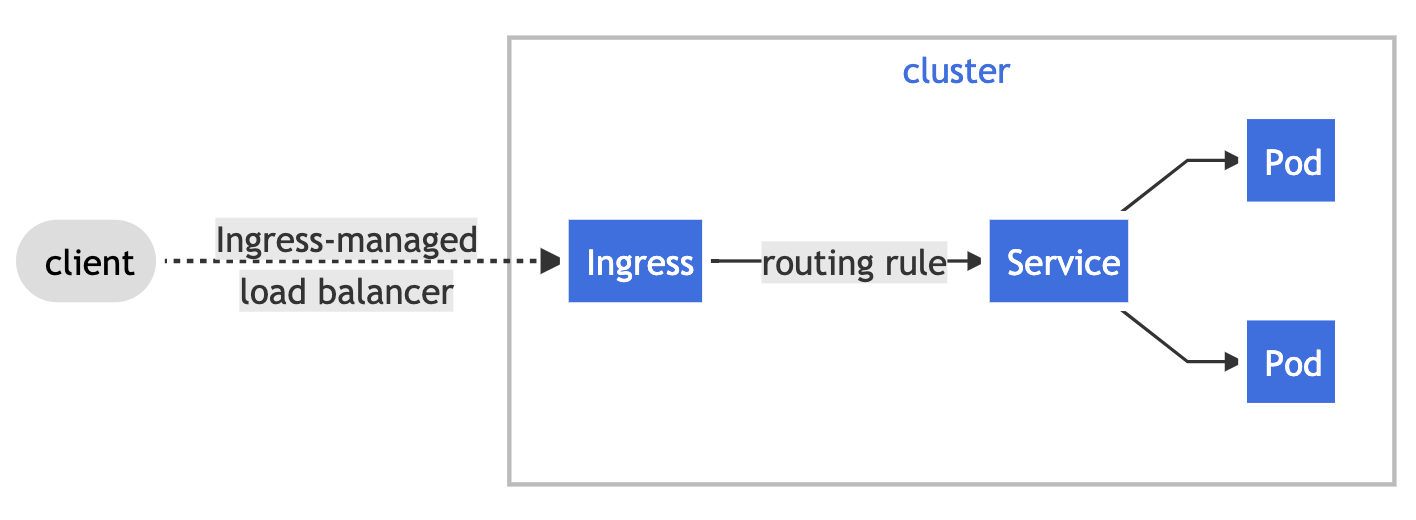Ever wonder how certificates and HTTPS actually work ? I know I did for a long time...
For years I pretended that I understood, as it seemed to either be expected as prior knowledge or simply glossed over in many tutorials.
Nowadays, simply knowing how certificates work is not enough. We need to know how to do something useful with this knowledge. Such as deploying HTTPS applications onto the modern platform of choice, Kubernetes.
This hands on session aims to explain what certificates are, how they are used for secure communication and also how we can leverage Kubernetes to deploy HTTPS applications with relative ease.
This tutorial covers the steps required to deploy both an internal and production ready HTTPS application on a pre-existing Kubernetes cluster built on on Azure Kubernetes Service (AKS).
SSH into your workstation
ssh <username>@<ip_address>
Or, alternatively, navigate to <ip_address>/wetty in your browser.
Clone down this repoistory
git clone <this_repo>
cd <repo_name>
In order to deploy our HTTPS application we will utilise the Ingress resource, available by default in Kubernetes.
Ingress exposes HTTP and HTTPS routes from outside the cluster to services within the cluster.
For the built in Ingress resource to work, the cluster must have an Ingress Controller running. The Ingress Controller fulfills the mapping of Ingress rules we define.
Ingress controllers are not included by default within a cluster. The most popular controller is provided by NGINX, we can add this to our cluster using Helm.
Add the ingress-nginx Helm chart repository
helm repo add ingress-nginx https://kubernetes.github.io/ingress-nginx
Use Helm to deploy an NGINX Ingress Controller
helm install ingress-nginx ingress-nginx/ingress-nginx \
--set controller.scope.enabled=true \
--set rbac.scope=true \
--set controller.admissionWebhooks.enabled=false
Once this is deployed, we can view the created service and assocaited EXTERNAL_IP (Note: It may take a few seconds to generate the IP)
kubectl get services ingress-nginx-controller
Set the EXTERNAL_IP as a variable for later use
EXTERNAL_IP=$(kubectl get services ingress-nginx-controller | awk 'NR==2 {print $4}')
The EXTERNAL_IP of this service acts as an entry point for the outside world.
Generate self-signed TLS certificate using openssl
openssl req -x509 -nodes -days 365 -newkey rsa:2048 \
-out /tmp/tls.crt \
-keyout /tmp/tls.key \
-subj "/CN=dpgexample.com"
Create Kubernetes secret for the TLS certificate
kubectl create secret tls internal-tls-secret \
--cert /tmp/tls.crt \
--key /tmp/tls.key
Run the demo application using kubectl apply
kubectl apply -f self-signed/internal-app.yaml
Create the Ingress resource
kubectl apply -f self-signed/internal-ingress.yaml
Test the Ingress configuration
curl -v --cacert /tmp/tls.crt --resolve dpgexample.com:443:$EXTERNAL_IP https://dpgexample.com
In the above curl command we indicate that we trust the self-signed certificate as an internal "CA".
Alternatively on your own machine (not your workstation) modify hosts file and view in browser. This will require sudo access.
Hosts file locations:
Windows c:\windows\system32\drivers\etc\hosts
Mac & Linux /etc/hosts
(Note: If the browser prevents you from proceeding, type "thisisunsafe" into the browser window. This should bypass the browsers built in security checks)
Login to Azure using service principal
az login --service-principal -u $APP_ID -p $APP_PW --tenant $TENANT_ID
Because our Kubernetes cluster is hosted on Azure AKS, during the installation of the Ingress Controller an Azure Public IP address is created that corresponds with the service EXTERNAL_IP. We can associate this Azure Public IP with a Fully Qualified Domain Name.
# Public IP address of your Ingress Controller
EXTERNAL_IP=$(kubectl get services ingress-nginx-controller | awk 'NR==2 {print $4}')
# Associate Public IP address with DNS name, we will use the hostname of our workstation as an example
DNSNAME=$(hostname)
# Get the Azure resource-id of the Public IP address
PUBLICIPID=$(az network public-ip list --query "[?ipAddress!=null]|[?contains(ipAddress, '$EXTERNAL_IP')].[id]" --output tsv)
# Update Public IP address with DNS name
az network public-ip update --ids $PUBLICIPID --dns-name $DNSNAME
# Display the FQDN
az network public-ip show --ids $PUBLICIPID --query "[dnsSettings.fqdn]" --output tsv
# Set FQDN as variable
FQDN=$(az network public-ip show --ids $PUBLICIPID --query "[dnsSettings.fqdn]" --output tsv)
We now have a unquie FQDN that we can use for our application.
Deploy the demo application using kubectl apply
kubectl apply -f LetsEncrypt/prod-app.yaml
Prior to this interactive session, the Kubernetes cert-manager controller has been pre-installed onto the Kubernetes cluster. See aks-cluster directory for details.
Cert-manager is a Kubernetes add-on that automates the management and issuance of TLS certificates from various issuing sources, including external CAs.
Create Issuer
kubectl apply -f LetsEncrypt/issuer.yaml
Update Ingress manifest to use our FQDN
sed -i "s/<REPLACE_ME>/$FQDN/g" LetsEncrypt/prod-ingress.yaml
Create an Ingress route by applying manifest
kubectl apply -f LetsEncrypt/prod-ingress.yaml
Verify that the certificate was created successfully by checking READY is True, which may take a minute
kubectl get certificate
Desribe the certificate resource to reveal what happens behind the scenes
kubectl describe certificate tls-secret
Finally navigate to the the Fully Qualified Domain Name, copy the result of the echo command to your browser
echo $FQDN
We have now seen how we can deploy HTTPS applicaitons on Kubernetes. We secured an internal application using our own self-sign certificates; and for production we automated the issuance of certificates, signed by a trusted CA (LetsEncrypt), using the Kubernetes cert-manager addon.
